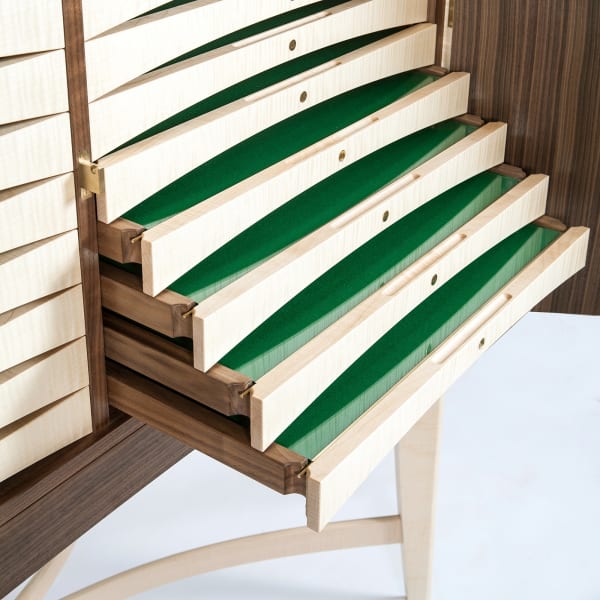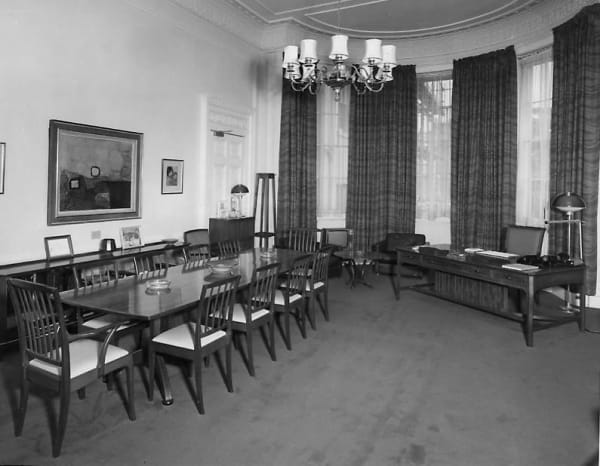-
-

Magdalen College, Oxford
In 2014, we were asked to replace the chairs in the college dining room. Designer James Ryan adapted his Grace chair design to suit the college’s requirements. The chairs had... -

Collector's Cabinet
A bespoke collector cabinet is more than furniture, it’s a showcase of your story and our craftsmanship. Each piece is thoughtfully designed to reflect your passions and built with carefully... -

Dining Tables
When we are asked to make a dining table we take care to fulfil the client’s requirements. James Ryan, the Barnsley Workshop designer, will make a measured plan of the... -

Dining Chairs
Our chairs have shaped components and design details to make them attractive and very comfortable. These features call for laminating processes to make curved crest rails, back bars and seat... -

Library Steps
Our handmade, exclusive library steps are designed to combine practicality with style. Each piece is tailored to fit your space. Reach high shelves with ease and timeless elegance. Crafted with... -

Canterbury Cathedral
In 1971 Edward Barnsley designed the Archbishop’s chair, prie-dieu and stool for Canterbury Cathedral. They were made in walnut with sycamore inlay by Herbert Upton and Malcolm Clubley in 473... -

Domesday Book Boards
Roger Powell, the renowned bookbinder, was one of Edward Barnsley’s oldest friends. In 1986 he advised on the rebinding of the Domesday Book for its ninth centenary. The manuscript is... -

Ministry of Education
In 1960 the Barnsley Workshop made a suite of office furniture in Cuban mahogany for David Eccles, the then Education Minister. The suite included a large desk, a meeting table...
-
-
Commissioning Furniture
 James Ryan
James Ryan
Manager and Designer








